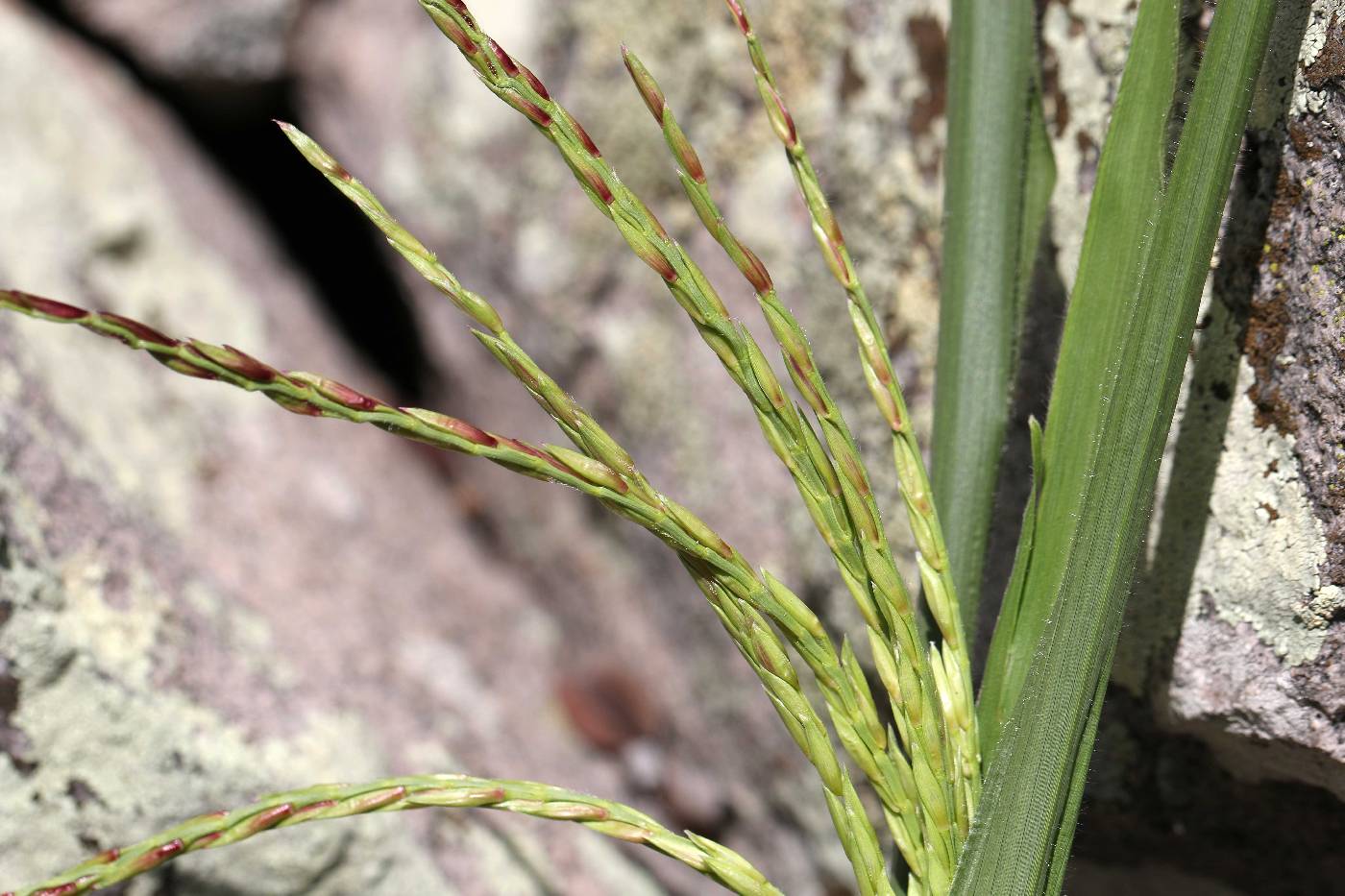|
Family: Poaceae |
Plants perennial; monoecious, staminate and pistillate spikelets evidently distinct, located in the same inflorescences, pistillate spikelets below the staminate spikelets. Culms 0.7-5 m. Leaves not aromatic; sheaths open; ligules membranous, erose to ciliate. Inflorescences terminal and axillary, panicles of 1-several subdigitate to racemose rames; rames with pistillate spikelets proximally and staminate spikelets distally; disarticulation in the rames, beneath the pistillate spikelets and at the base of the staminate portions. Pistillate spikelets exposed, solitary, embedded in the indurate rame axes; lower glumes coriaceous, closing the hollows in the rachises and concealing the florets; upper glumes similar but smaller; lower florets sterile; upper florets pistillate; lemmas and paleas hyaline, unawned; styles 2, not fused. Staminate spikelets paired, both sessile or both subsessile, or 1 sessile and the other pedicellate; glumes coriaceous, chartaceous, or membranous; lemmas and paleas hyaline, unawned. Pedicels (when present) not fused to the rame axes. x = 9. The origin of the name is unknown. Spikelets unisexual, in spikes; staminate spikelets above the pistillate, in pairs at the nodes, 2-fld, with 2 glumes and 2 flowering lemmas; pistillate spikelets solitary at the nodes, sunken in hollows on the thickened articulate rachis, with 2 glumes, 1 sterile lemma, and 1 fertile lemma; stout perennials. 7, warm Amer. Gleason, Henry A. & Cronquist, Arthur J. 1991. Manual of vascular plants of northeastern United States and adjacent Canada. lxxv + 910 pp. ©The New York Botanical Garden. All rights reserved. Used by permission. |


